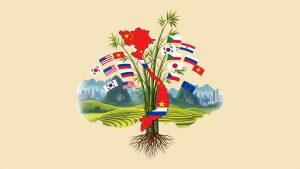As we move into the epoch of Asia’s ascendancy, Southeast Asia has become a geostrategic region characterised by rapid economic growth and increasing projections of power by major global actors. The region comprises eleven small and medium-sized countries with limited economic and military capabilities: Indonesia, Vietnam, Singapore, Malaysia, Philippines, Thailand, Cambodia, Laos, Brunei, Myanmar, and the newly admitted Timor-Leste. Historically, the region has long been at the centre of major power rivalries. After gaining independence from European colonial rule, Southeast Asian states immediately entered a new era of international power dynamics, from the Cold War between the United States and the Soviet Union to today’s multipolar world, particularly defined by competition between the US and China.
The establishment of the Association of Southeast Asian Nations (ASEAN), a regional organisation representing ten Southeast Asian states, marked a collective effort to create a region of peace, stability, and prosperity. The founding purpose of ASEAN was to eliminate intra-regional political turmoil, interstate tensions and territorial conflicts among member states (Natalegawa, 2018). Its expansion in the 1990s reflected a broader ambition to manage not only internal affairs but also external relations. Though it moved beyond its original purpose, ASEAN has successfully helped transform Southeast Asia into one of the world’s most stable and peaceful regions, owing largely to its distinctive diplomatic approach, known as the “ASEAN Way” (ibid.).
Over nearly six decades, Southeast Asian diplomacy has achieved notable success in both internal and external relations. Internally, ASEAN member states differ widely in culture, ethnicity, language, religion, economic structure and political systems, making Southeast Asia arguably the most diverse region in the world. Historically, tensions over territorial borders were common, such as those between Malaysia and the Philippines, Indonesia and Malaysia, Singapore and Indonesia, and Thailand and Malaysia. The creation of ASEAN marked a shift in how member states approached regional cooperation, prioritising preventive diplomacy and shared values over conflict (Mahbubani & Sng, 2017). This approach helped control intra-regional disputes and encouraged cooperation, enabling member states to balance national interests with shared regional goals (Natalegawa, 2018).
The ASEAN Way has proven effective in managing regional tensions and encouraging cooperation, even beyond Southeast Asia; its influence is also felt in Northeast Asia (Luc, 2020). Instead of adopting “naming and shaming” strategies common in Western diplomacy, where public criticism is used to enforce international norms, ASEAN favours quiet diplomacy and mutual respect for sovereignty. Member states emphasise consensus-building, non-interference, peaceful dispute resolution and neutrality. These values are deeply rooted in a shared colonial history; all ASEAN countries, except Thailand, were once under European rule (Acharya, 2021). As a result, sovereignty, territorial integrity, and independence remain sacrosanct, principles enshrined in the Treaty of Amity and Cooperation (TAC).
Southeast Asian states have navigated multiple shifts in global power dynamics, from Western colonisation to Cold War rivalries and now to a multipolar world dominated by competition among rising Asian powers. The Cold War era saw Southeast Asia become a strategic battleground for proxy conflicts between US-aligned democracies and Soviet-backed communist regimes. During this time, ASEAN was often perceived as pro-Western due to its anti-communist stance. However, as the region matured, member states grew more aware of the risks posed by external interference, prompting efforts to build both national and regional resilience (Natalegawa, 2018). Today’s US–China rivalry, however, differs markedly from the Cold War. Whereas the Cold War was defined by ideological opposition, the US–China competition is characterised by deep economic interdependence and global connectivity (ibid.).
Despite the increased complexity of international relations, ASEAN continues to uphold its principles of consensus, neutrality and face-saving. It has earned the trust of all major powers, positioning itself as a central player in multilateral diplomacy. Institutions such as the ASEAN Regional Forum (ARF), East Asia Summit (EAS), and ASEAN Plus Three exemplify ASEAN’s ability to set agendas, establish norms and bring major powers to the negotiating table. Although ASEAN faces criticism over the effectiveness of its consensus-based diplomacy, it remains adept at managing external power rivalries and protecting the region from becoming entangled in geostrategic conflicts.
In conclusion, Southeast Asia, at the heart of both the US’s Free and Open Indo-Pacific strategy and China’s Belt and Road Initiative, has demonstrated that being a geopolitical fulcrum does not equate to being dominated by external powers. ASEAN and its member states have shown remarkable diplomatic agility, pragmatism, and effectiveness in managing great power dynamics through multilateralism and diversified foreign relations. Their diplomacy has transformed a region of small, diverse states into one marked by political stability, economic prosperity and a leading role in shaping international cooperation at both regional and global levels.
Vu Khanh Phuong (Rose), is originally from Vietnam and currently resides in Scotland, where she is pursuing a Master’s degree in International Conflict and Cooperation.
- Rose Elizabethhttps://asiascot.com/author/rose-elizabeth







